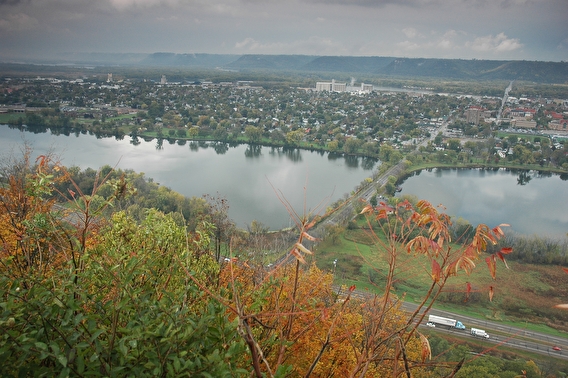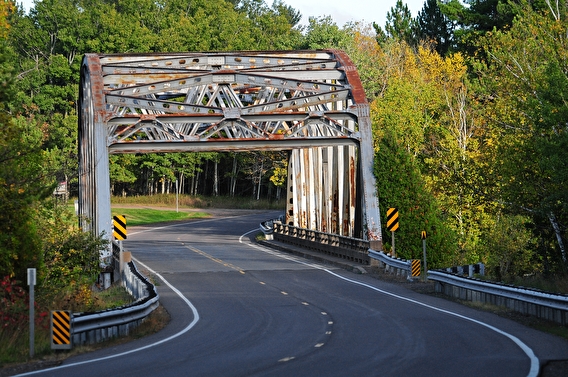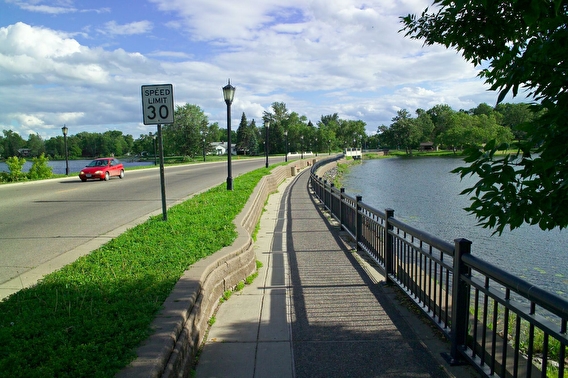By Alan Forsberg, P.E., Retired Blue Earth County Engineer

Is an Environmental Assessment Worksheet—or EAW—required for your local government road and bridge project? After coordinating with staff of the Minnesota Environmental Quality Board (EQB), discussion with county engineers, my own experience as a county engineer responsible for preparation of two EAWs and an environment impact statement (EIS), and a term on the EQB, the answer can be yes, no, and maybe.
Environmental Quality Board: origins in state law
But first some background on the EQB. In 1971 the Minnesota Legislature passed the Minnesota Environmental Rights Act (MERA), with a strong bipartisan vote. This act declared it state policy to create and maintain conditions under which “human beings and nature can exist in productive harmony in order that present and future generations may enjoy clean air and water, productive land, and other natural resources...”
MERA laid the foundation for the Minnesota Environmental Policy Act (MEPA), which passed the legislature in 1973 with another strong bipartisan vote (60–0 in the Senate and 11– 7 in the House). Minnesota law 116D.02 established state policy that, among other things, requires agencies to study environmental impacts before beginning projects. It directs all state agencies use the “latest and most authoritative findings in decision making along with economic and technical considerations.”
Companion legislation established the Minnesota Environmental Quality Board. The EQB was charged with implementing rules and maintaining an environmental review process, doing environmental studies of its own, and coordinating the environmental-related actions of each of the several state agencies.
The EQB consists of department heads of eight state agencies, the chair of the Board of Water and Soil Resources, and eight public members, one from each Congressional District. All members are appointed by the governor. The Metropolitan Council has a non-voting position on the board.
Minnesota rule 4410.1000 established the purpose of an EAW to be a “brief document prepared in worksheet format which is designed to rapidly assess the environmental effects which may be associated with a proposed project.” The EAW serves primarily to:
- “Aid in the determination of whether an EIS is needed for a proposed project.”
- “Serve as a basis to being the scoping process for an EIS.”
Yes, an EAW is mandatory

The nature of the project and natural and human resources affected by the project determine the need for an EAW.
Minnesota rule 4410.4300 Subp. 22 addresses the mandatory category specific to road, bridge, and trail projects. The threshold limits that trigger an EAW are:
- “Construction of a road on a new location over one mile in length that will function as a collector roadway.”
- “Construction of additional through lanes or passing lanes on an existing road for a length of two or more miles, exclusive of auxiliary lanes.”
- “Addition of one or more new interchanges to a completed limited access highway.”
Many public works agencies are also responsible for constructing and maintaining trails. Subp. 37 of this rule requires an EAW if a trail 25 miles or longer is designated or constructed or if 10 miles or more of an existing trail is paved.
An EAW may also be mandatory if your project has components meeting the criteria for other project types listed in this rule as mandatory—for example, water appropriation and impoundments, stream diversions, and public waters sections.
No, an EAW is not required
Minnesota Rule 4410.4600 Subp. 14 states the following road and bridge projects are excluded from an EAW requirement.
- Highway safety improvement projects.
- Installation of traffic control devices, individual noise barriers, bus shelters and bays, load zones, and access and egress lanes for transit and paratransit vehicles.
- Modernization of an existing roadway or bridge by resurfacing, restoration, or rehabilitation that may involve acquiring minimal amounts of right-of-way.
- Roadway landscaping or construction of bicycle and pedestrian lanes, paths, and facilities within an existing right-of-way.
- Any stream diversion, realignment, or channelization within the right-of-way of an existing public roadway associated with bridge or culvert replacement.
- Reconstruction or modification of an existing bridge structure on essentially the same alignment or location that may involve acquiring minimal amounts of right-of-way.
Maybe an EAW

There are several exceptions to the “mandatory EAW” and “EAW exclusion” categories listed above for road, bridge, and trail projects.
- If a project is a small part of a larger project planned in which an EAW is required—a “connected action”—an EAW needs to be prepared for the entire large project.
- There is also a mandatory category for EIS projects. In this case, the project proposer may skip the EAW and go directly to an EIS.
- The responsible government unit (RGU) for a project may determine that “…because of the nature or location of a proposed project, the project may have the potential for significant environmental effects”—and require an EAW.
- A petition process is available for citizens to request an EAW; members of the public request the RGU to determine the need for an EAW.
Placing a project in the “mandatory,” “exclusion,” and “discretionary” EAW categories is a complex and, in some cases, subjective determination. I therefore recommend that a project proposer, if there is any doubt, contact EQB Environmental Review staff to discuss your project and its need for an EAW.
EQB environmental review staff may be reached at 651-757-2873 or env.review@state.mn.us. You will find the staff expert and eager to help. You may also want to discuss the project with your local agency’s attorney and inform your elected officials of the cost, time delay, and controversy that may be associated with an EAW.
EQB discussion items: more consistency, less complexity
During research for this article, several items were identified I believe are worthy of future discussion.
The first is about the EQB itself—it may lack consistency and continuity since all the members are appointed by the governor. A new administration can change environmental policy, as has happened in the past. In addition, EQB board members typically lack experience in being responsible for preparing an EAW or EIS or constructing a project.
The second issue involves the growth in complexity. As noted above, the EAW by Minnesota Rule 44410.1000 is to be a “brief document prepared in worksheet format which is designed to rapidly assess the environmental effects which may be associated with a proposed project.” It has evolved into a complex, lengthy, time-consuming, and expensive document for public works projects.
With the addition of the EQB’s greenhouse gas analysis in 2023, the worksheet form is 13 single-space pages. Two recent EAW examples demonstrate the effort needed: One for a new public works building had 34 pages of text and 118 total pages (including the appendixes); a rural road project had 49 pages of text and 202 total pages (with the appendixes).
Costs may be $30,000 to $60,000 or more. It may take several months to collect data, analyze it, and draft the EAW. Processing the EAW to reach a decision on the need for an EIS typically takes another 80 to 100 days.
Unless an agency has environmental staff, consultants with the necessary expertise and experience must be retained to prepare the document. Between 1999 and 2023, 200 EAWs were prepared for all road and bridge projects in the state, resulting in substantial total costs and delays.
During the same time, the Minnesota Department of Natural Resources, Board of Water and Soil Resources, Minnesota Pollution Control Agency, U.S. Army Corps of Engineers, and in some cases local government and watershed permits have also become more complex, requiring data and analysis largely duplicated in the EAW. Could the EAW be eliminated or changed back to the “brief document prepared in a worksheet format” envisioned in the original legislation?
The final issue relates to greenhouse gas analysis. Depending on the project, some of the environmental analysis considers the total—not the net—effect. For example, a new road may generate greenhouse gases, but the traffic diverted from other less-efficient roads may have resulted in a net decrease in greenhouse gases. The EQB is developing a greenhouse gas analysis tool, and I hope it will explicitly address net rather than proposed project-only effects.